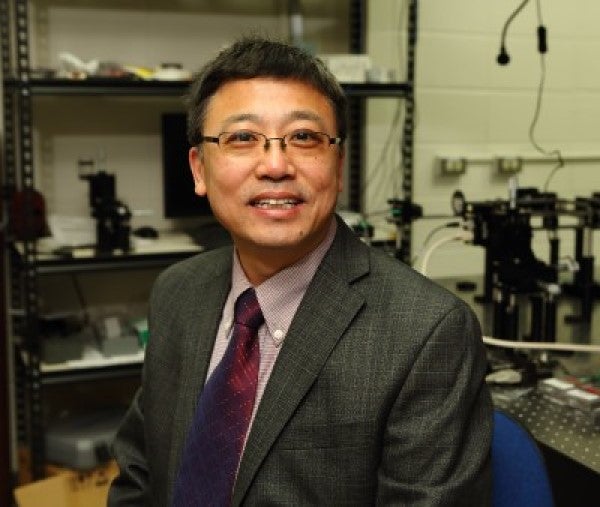Researcher’s catalyst award to unlock vision secrets
Text block one Heading link

Many of the most prevalent eye diseases in people go undetected until the damage starts to affect a person’s vision. Once this point is reached, treatment becomes harder and sometimes the vision loss may be impossible to reverse.
Xincheng Yao, a Richard and Loan Hill Professor of Bioengineering, and members of his Biomedical Optics and Functional Imaging Laboratory have been working for years to solve this problem by developing new eye imaging instrumentation and technology to help study and diagnose retinal diseases. The lab got a jump start on these efforts with an award from the Chicago Biomedical Consortium.
The CBC Catalyst Award, which is given to scientists in the Chicago area who are pursuing cutting-edge and high-risk/high-reward research, will give Yao and Tiffany M. Schmidt of Northwestern University $248,770 to study a recently discovered type of retinal cell in the eye.
Yao said researchers discovered that intrinsically photosensitive retinal ganglions cells (ipRGCs) are light sensitive. The cells respond to light directly because of the way they express photopigment melanopsin. It was previously thought that only rod and cone photoreceptors could sense light.
“A deeper understanding of melanopsin containing ipRGCs is essential for in-depth understanding of the nature of the visual system, and for the development of new and robust methodologies for disease detection,” Yao said.
The project calls for close collaboration between researchers at UIC and Northwestern. Yao said his team will be responsible for creating instruments to image the ipRGC cells, optimization of the imaging techniques, and experimental validation, while Schmidt’s team will oversee animal models, experimental design, data analysis, and interpretation.
Yao hopes that the project will allow the researchers to capture direct images of physiological activation in ipRGCs, something that has never been done before.
“The success of this project will provide a revolutionary tool to enable parallel optophysiological monitoring of multiple ipRGCs functioning together,” Yao said. “Compared with the current standards of recording single-cell activity, our proposed methodology will open a unique opportunity to foster advanced study of ipRGCs, with the potential for noninvasive recording in humans.”
In addition to his partners at Northwestern, Yao’s team at UIC also includes Taeyoon Son, research assistant professor of Bioengineering and Dingcai Cao, professor of ophthalmology, who will also be crucial contributors on this project.